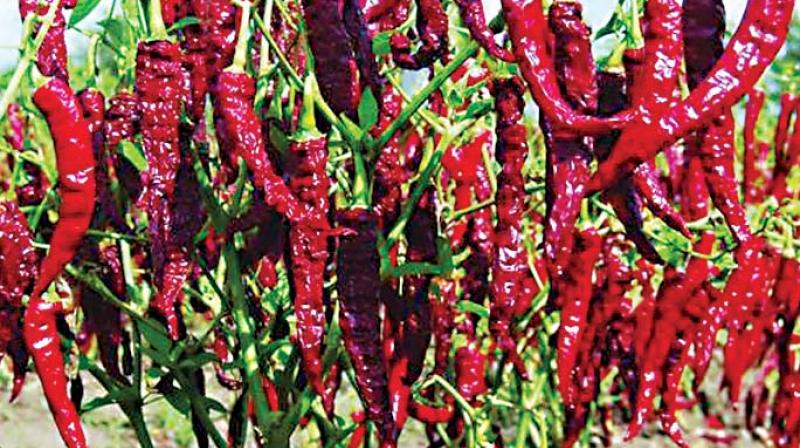Andhra Pradesh: Chilli farmers move to lucrative cotton
Falling prices force farmers to change options.

Guntur: The disappointing prices of red chillies last season forced farmers to give up the cultivation of chillies in favour of cotton. Usually, around 65,347 hectares are sown with chilli, but this year only 45,256 hectares have been sown. This is expected to lead to a shortage of the world-famous Guntur red chillies in the days to come.
Last season, the prices of chillies fell to Rs 1,500 to Rs 2,500 per quintal, based on quality. The state government announced a bonus of Rs 1,500 per quintal to assist chilli farmers. However, a majority of them still incurred massive losses because of the disappointing prices, and they decided to shift to the cultivation of cotton in the Kharif season.
This season, chilli growers have shifted to the cultivation of cotton, expecting good prices.
Senior chilli farmer A. Subba Reddy who has shifted from chilli to cotton says that cotton is priced at Rs 6,000 to Rs 7,000 per quintal, while the prices of chilli are unstable in the range of Rs 1,500 to Rs 4,000 per quintal, according to the variety. He says that Rs 4,000 is invested in the cultivation of one quintal of chilli, so there is no point in growing it and selling it at a loss. He adds that the government has set Rs 4,320 per quintal as the minimum support price for cotton, which is another attractant for farmers, as it means that they are guaranteed an income in exchange for their produce.
Chilli trader S. Anjaneyulu says that an imbalance in demand and supply is the cause of a drop in the price of any crop.
He says that if a crop fetches good prices one season, then farmers switch to the cultivation of that crop in the next season, leading to excess production and a drop in prices. He fears that in the near future there will be a dearth of red chillies and an excess of cotton available. The resultant drop in the prices of cotton will spell trouble for former chilli farmers. He and other traders ask the government to control the area dedicated to the cultivation of each crop to maintain an optimum demand-supply ratio.

